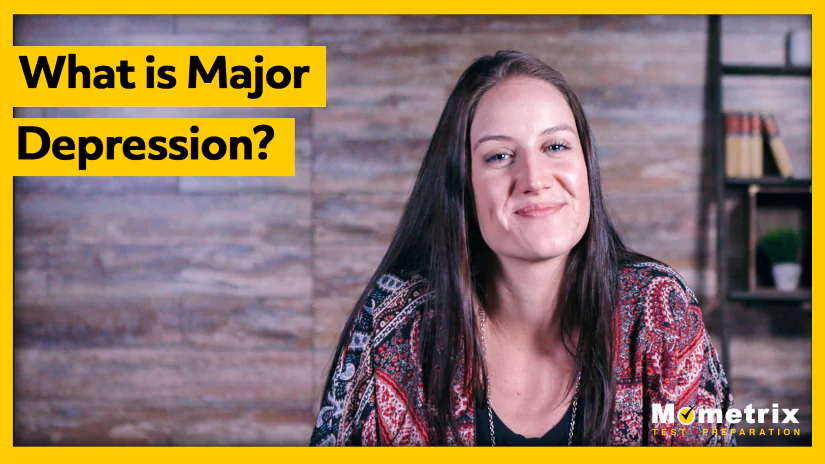
Hey, guys! Welcome to this video on major depression.
Types of Major Depression
Major depression is also referred to as unipolar or major depressive disorder. Major depression is indicated by chronic feelings of sadness and a lack of enjoyment in activities one used to enjoy.
Now, the term unipolar depressive disorder is used to highlight how it is different from bipolar disorder. With bipolar disorder a person goes up and down between depression and mania. Well, with unipolar depressive disorder or Major depression a person is only experiencing those low, lows (hence the prefix “uni-”).
Major depression is really just a big category that more specific depressions fit under. So, let’s take a look at the different types of majordepression, there are five.
Seasonal Affective Disorder (SAD)
The first type that we will talk about is seasonal affective disorder (SAD).
Seasonal affective disorder is a type of depression that occurs during certain seasons then passes. It is most common during the fall and winter months. SAD may be due to the reduced amount of sunlight during the winter months, although some do experience SAD during the spring and summer months. People with SAD may have an imbalance in serotonin, which is a hormone that affects your mood. They, also, may produce an excessive amount of melatonin and a deficient amount of vitamin D.
Depression symptoms of SAD may include sadness, carb cravings and weight gain, fatigue, irritability, feelings of emptiness, lack of desire to do things one used to enjoy, trouble sleeping, and thoughts of suicide.
Psychotic Depression
Psychotic depression exists in someone who has severe depression as well as a form of psychosis.
Psychotic depression is most common in people who have experienced traumatic events in their past, or perhaps are still walking through traumatic events. This psychosis may be in the form of hallucinations, or delusions. Hallucinations could be hearing and/or seeing things that others cannot see.
Melancholic Depression
Melancholic depression is generally categorized by extreme weight loss, and a loss of enjoyment in activities that one used to enjoy. Generally, the person feels similar to how someone might feel when grieving the death of a loved one.
A person with Melancholic depression feels almost incapable of experiencing pleasure in any part of life.
In order to be diagnosed with melancholic depression one must display at least three of the following symptoms:
- Feelings of emptiness, and loneliness. This is not something that is just do to an event that may prompt feelings of sadness. This is a much more intense feeling than that.
- Feelings of heaviness are consistently worse in the morning.
- It may involve waking up a couple of hours earlier than normal.
- Anorexia, or extreme loss of weight.
- Irregular movement, irritability, slowing of movement.
Catatonic Depression
It is very common in someone with catatonic depression, to sit without any movement and without saying anything for a long period of time.
Symptoms of catatonic depression include:
- Motionlessness
- Speechlessness
- Irregular movement
- Body twitches
- Sadness
- Loss of enjoyment in activities
- Quick weight loss or weight gain
- Changes in one’s appetite
- Issues getting out of bed
- Irritability
- Fatigue
- Feelings of worthlessness
- Trouble thinking, and concentrating
I hope that this video over the types of major depression has been helpful to you. See you guys next time!

